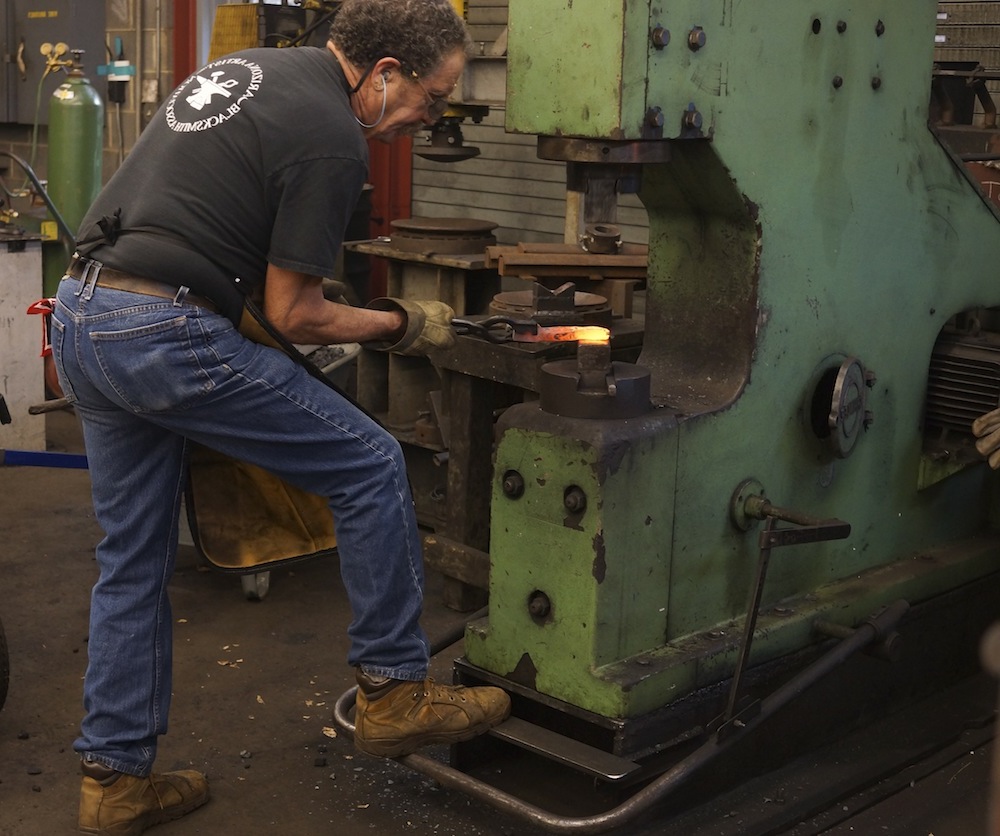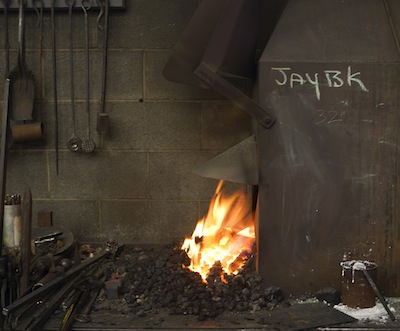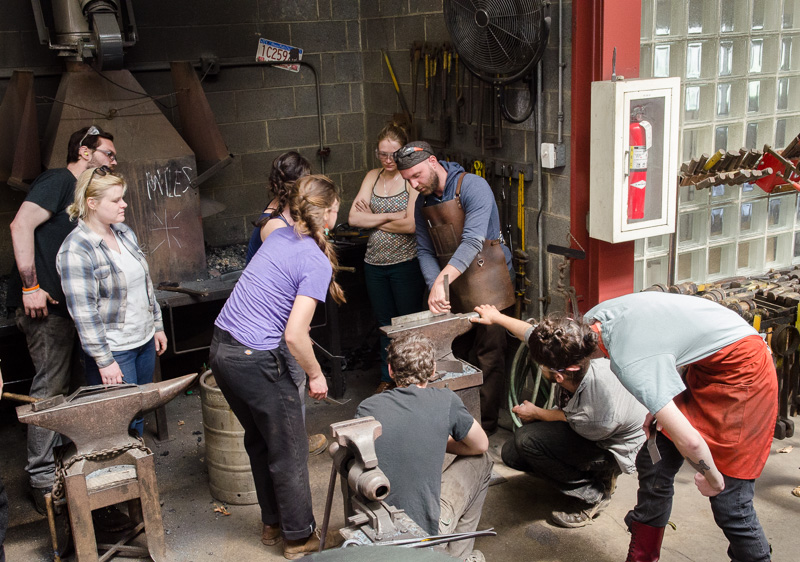What’s your philosophy of teaching?
Unprintable but I’ll tell you. I didn’t plan any of this. I joined the military, got out of the war and couldn’t get a job. I went to college on the G.I. Bill. I kind of think that I was born to be a teacher; I can’t explain it more than that.
I’ve always liked teachers. Particularly in art and craft, everybody’s going to be a teacher because we’re dinosaurs–it’s not all in the books, it’s not all written down, and you won’t see every lecture. So we need to share knowledge. The internet is full of information but not necessarily knowledge. So I got into teaching–I’ve been teaching now since 1973.

How long have you been teaching at Penland?
I’ve taught three concentrations, two summer classes, three guest artist [visits], and I did an instructor retreat. I would have done the first instructor retreat but I was in intensive care so I couldn’t come. Which pissed me off–I really wanted to go (give me a bunch of Demerol!) I’d like to do another sixty-seven years; I’ve had a great time.
Each group I teach tends to be a little different. They tend to bond together. The tighter they are the better it runs. Building what we call in the military “unit effing integrity:” if they’re good enough to die with they’re good enough to eat, drink and sleep with. Well here, take out the ‘dying’ part: if they’re good enough to make art with then it should become a community. You can be as individual as you want at Penland and people will respect your privacy. But you work better when you’re together. I learn more from them too.
This group is very hard working–all of them, in all the areas. I tend to trek around and see what they’re up to. And this is grueling: they’re trying to pack about a year’s work into two months.
Which reminds me. I saw a note on the chalkboard in the iron studio: DON’T BURN UP.
Yeah, or out! [My students] have been ’embellishing,’ let us say, up there. I encourage them to do that. My favorite one up there is ‘The more you complain the longer God makes you live.’ Favorite Jewish proverb. I love that one. No drama, no sniveling, no whining. And talk to me when you’ve got a problem, if you can.
Does that feel critical to your experience as a teacher here, knowing people more personally?
I think so, as much as you can know someone in a couple of months. But it’s intense. It’s not for the weak of spirit, heart, mind, body.
Fair enough.
The energy is here is infectious. I’m running on a twenty-two year old’s energy and the minute I drive down the hill it’s all just going to go away. That’s the not so salutary effect of adrenaline wearing off when you leave Neverland.
This a a singular place. I really wish that the rest of the world ran like this. The greatest thing about Penland besides the food, the art, the people, the place is that nobody cares up here; it all comes down to what Dr. King says: ‘it’s the content of your character.’ Everything else is just like wearing a different shirt–nobody gives a rat’s ass. And I really like that.–Elaine Bleakney

Jay Burnham-Kidwell currently teaches the concentration Smokin’ Hot Iron at Penland. He is professor emeritus from Mohave Community College in Arizona. His work is held in collections at the National Ornamental Metal Museum in Tennessee, the University of Georgia, and West Dean College in the United Kingdom.




